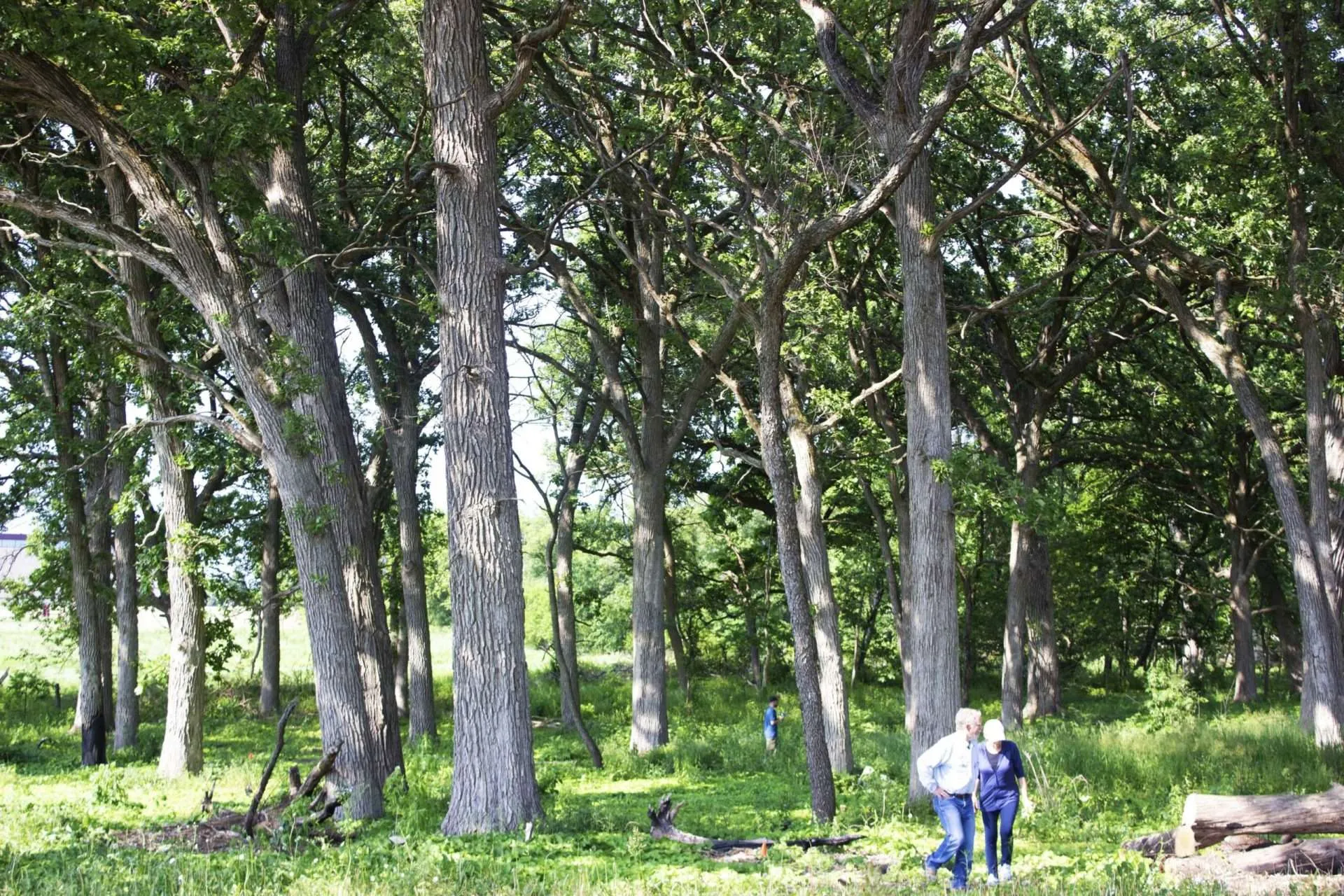It started with a question among dedicated individuals: “Why can’t we have a National Wildlife Refuge here?” Hackmatack National Wildlife Refuge, which this fall will celebrate ten years since its official establishment, began just like that and has grown to a partnership of many organizations and individuals, including Openlands, and the protection of over a thousand acres and counting, for wildlife and people.
The preservation of landscapes like Hackmatack is one of the ways that Openlands is gaining ground with land trusts across the country through the Land Trust Alliance. Over 60 million acres of land have been protected by land trusts in the United States with the goal of protecting 60 million more by 2030. That ambitious goal is only possible if we increase the pace and scale of conservation in the region. Throughout this month we’ll be focusing on ways people can help us keep gaining ground through volunteering, advocating, and supporting land conservation. At Hackmatack, preservation and restoration continues and when complete, the Refuge will include over 10,000 acres of protected land.
The existence and growth of this National Wildlife Refuge and the work of volunteers go hand-in-hand. Back in 2004, a small group of volunteers, who came to be known as Friends of Hackmatack, began to pursue the possibility of transforming the land that Hackmatack now occupies into a wildlife refuge. Openlands became a key partner early on, and with other groups like McHenry County Conservation District, and over the next eight years public interest was gauged, and over $20,000 in donations were collected to start the Refuge. Eventually, thanks to the ongoing efforts made by partners, the proposed Refuge made national news, and then-Secretary of the Interior Kenneth Salazar publicly announced the authorization of Hackmatack as a National Wildlife Refuge. Volunteers have been the backbone of Hackmatack from its inception and have continued to restore and care for the land so that it can be enjoyed by future generations.
While Hackmatack is managed by the U.S. Fish and Wildlife Service and its refuge manager, volunteers and partnerships are critical to the health and sustainability of Hackmatack. Openlands often acquires unrestored land and will work in lockstep with Friends of Hackmatack and McHenry County Conservation District to remove invasives, plant native plants, and restore the land to health. That means that the bulk of restoration work at Hackmatack falls into the hands of volunteers.
According to Friends of Hackmatack Board Member Pete Jackson, one of the best examples of the impact that volunteers make at Hackmatack is through the ongoing work at Tamarack Farms, an area currently owned by Openlands: “We’ve been working there for over two years and we’ve put in over 825 hours of volunteer hours. This is a savanna that was severely degraded with overgrown brush. We were able to complete the clearing of that site and we’re doing follow-up work now.”
Jackie Bero, who works as the volunteer coordinator at the McHenry County Conservation District, explains that volunteers do more than just manage land. The volunteers who work with the Conservation District and Friends of Hackmatack are teachers and advocates who educate others about the importance of conservation.
The necessity of volunteers cannot be understated; according to Bero, 511 registered volunteers in the Conservation District fulfill different volunteer roles including doing public outreach and education, along with restoration and land management. In 2021, volunteers worked over 6,000 hours, which equates to an additional three full-time staff. Without the work of volunteers, the scope of work necessary to keep Hackmatack restored would not be possible.
“We can’t do it all ourselves, there’s too much land to cover. Frankly, we’re inspired [by the work of volunteers],” Bero explained.
People interested in volunteering can get involved in various capacities, ranging from one-off restoration visits to long-term projects. Many steady volunteers come to every workday and are the backbone of Hackmatack. However, for people unable to make a long-term commitment, restoration is the easiest thing for a drop-in volunteer to get involved with. According to Bero, all volunteers are welcome and appreciated. “If you don’t have a lot of time and can only make it once a year, that’s a couple of hours we can’t do on our own,” she said.
Volunteers can take part in a number of different activities, including seed collecting, brush cutting, and plant and wildlife monitoring. For people looking for more advanced restoration work, the Conservation District offers training for chainsawing, herbicide use, prescribed burning, and pulling garlic mustard.
Education is a core tenet of the mission of Friends of Hackmatack, and they always use workdays as an opportunity to help volunteers understand the importance of the local ecology and their work. The process of helping volunteers understand the natural world around them helps volunteers understand why their work is important and worth committing to.
According to Friends of Hackmatack Officer and Board Member Steve Byers, the organization encourages their volunteers to become leaders in their own right and develop their own skills. “It’s a plus for the District and Friends of Hackmatack, but it’s a plus for the individuals that become leaders in stewardship activities. It’s an empowering experience,” he explained.
Beyond the on-the-ground restoration work that volunteers support, volunteers also play a crucial role in the policy work necessary to keep Hackmatack sustainable for future generations. According to Openlands’ Restoration Specialist Linda Masters, “A vibrant volunteer community is really the eyes and ears on the ground – they are constituents and voters. They will write to their legislators and ensure that these places remain and are not bulldozed or developed, that they are cared for.”
Anyone interested in volunteering at Hackmatack can do so by submitting an interest form through the McHenry County Conservation District and visiting the Stewardship Activities page through Friends of Hackmatack. Interested individuals can also reach out directly to Pete Jackson. Together, we can keep gaining ground to 2030!
